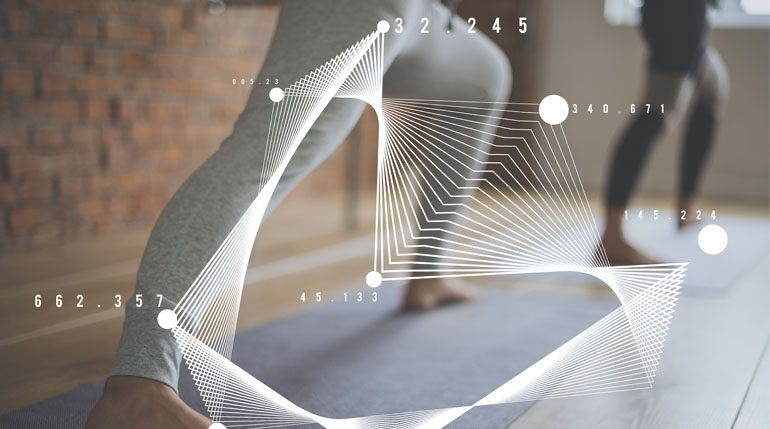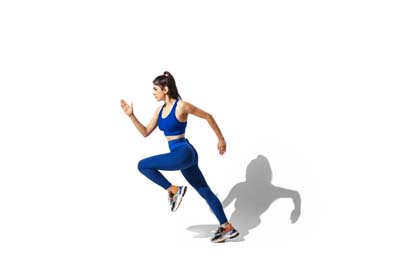
Before beginning any exercise program, it is important to establish one’s current fitness levels. This enables us to be able to choose the intensity of workout and set an achievable goal. Assessing the fitness personality can also help determine the kind of exercises that will work for a particular body type.
Assessing Fitness Levels
The three main aspects of fitness are cardiovascular, strength, and flexibility. While analyzing these levels of fitness, it is important to remember that while physical fitness and good health go hand-in-hand, self-assessments can only be an indicator of the fitness levels, while health, on the other hand, can be assessed by a medical expert.
Stated below is a fitness personality test that can help determine the kind of workout an individual needs in order to reach their fitness goals.
The Fitness Personality Test
Different types of personalities are suited for different types of fitness exercises. Therefore, assessing fitness types can help decide the exercises one might enjoy the most.
The Take-It-Easy Personality Type
The Take-It-Easy Personality type prefers low-impact, calming and rejuvenating exercises that focus on the mind, body and spirit. With an intensity of 4-5, these workouts are mainly performed indoors and focus on the overall well-being of an individual. A few examples of low to moderate workouts are walks, swimming and relaxing yoga and stretching sessions.
The Get-Up-And-Go Personality Type
The Get-Up-And-Go Personality type prefers combination workouts which vary in intensity. These workouts can be performed indoors or outdoors, depending upon an individual’s preference. With an intensity of 5-7, these workouts are focused on improving energy and cardio fitness, boosting strength and achieving a stronger, toned body. A few examples of moderate workouts are cycling, aerobic activities, power yoga or Pilates.
The Let’s-Do-It Personality Type
The Let’s-Do-It Personality type prefers high-speed, high-impact workouts which require higher levels of energy. These workouts are performed outdoors, focusing mainly on extreme fitness, physically challenging exercises and stress-release. With an intensity of 7-8, these workouts are recommended for the physically fit. A few examples of these workouts are running, uphill jogs or brisk walks, high-resistance cycling and heavy weightlifting.

Testing Cardio Fitness
Cardiovascular Fitness, also known as Aerobic Fitness, refers to the level of fitness of the heart. It is determined by measuring the Resting Heart Rate or the heart rate recovery time which suggests how quickly the heart rate begins to slow down after intense exercise.
The Heart Rate Recovery Time Test
Step 1: Establishing the Resting Heart Rate
Step 2: Stepping up and down on a higher step continuously for 3 minutes
Step 3: Resting for 30 seconds before checking the pulse rate to establish the current heart rate.
What Do The Test Results Imply?
The lower the current heart rate post the 3 minute workout, the higher the level of cardio fitness and lesser the Heart Rate Recovery Time.
How Often Should You Take The Heart Rate Recovery Time Test
The test can be taken every 3-4 weeks provided one can manage to incorporate regular cardio workout sessions.
Establishing The Resting Heart Rate
The Resting Heart Rate or RHR is measured based on the number of times the heart beats per minute when an individual is in resting state, and is therefore used to calculate the approximate level of cardio fitness at any given time. The Heart Rate Recovery Time test is also carried out taking into consideration the RHR based on which the Recovery Test is then conducted.

Measuring the Heart Rate
While holding on hand with the palm facing upwards, place the index finger and middle finger of the dominant hand at the base of the thumb on the radial artery which is located on the inner wrist. Please your fingers on the artery and press till you feel a pulse. Begin counting the heart rate for 15 seconds and then multiply that result by four to establish the heart rate. The heart rate can also be measured by taking your pulse on the side of your neck, just below the jawbone by placing your fingers on the carotid artery.
The Best Time To Check The RHR
Since the body is most relaxed early in the morning, RHR can be checked upon waking. However, anytime during the day when an individual is not stressed, and has been resting for at least 10 minutes, the RHR can be calculated. Avoid taking the RHR after the consumption of alcohol or caffeine as these beverages tend to increase the heart rate.
The Implications of These Results
The lower the RHR, the fitter the heart. However, with age, overall health and well-being and weight fluctuations might cause the the heart rate to vary. Nevertheless, establishing the RHR before commencing any new fitness routine can help one track their progress in the long run. Once the heart rate begins to lower with a regular fitness regime, it implies the heart is getting stronger. Incase of no change, upping the intensity of the workouts is recommended.
How Often Should The RHR Test Be Taken
The RHR can be monitored as often as wished. However, a gradual change will be noticed over a period of 3-4 weeks after beginning a new regime. A slow and steady change in the heart rate will be noticed as the workout regime progresses.
Do not miss a single article!
Submit your email id to get new articles directly into your email inbox!
- Employee Wellness Programs: They Really Work! - October 21, 2022
- Yoga Teacher Training Standards - November 18, 2021
- Why You Will Never Go Hungry Again - October 25, 2021




Add Review